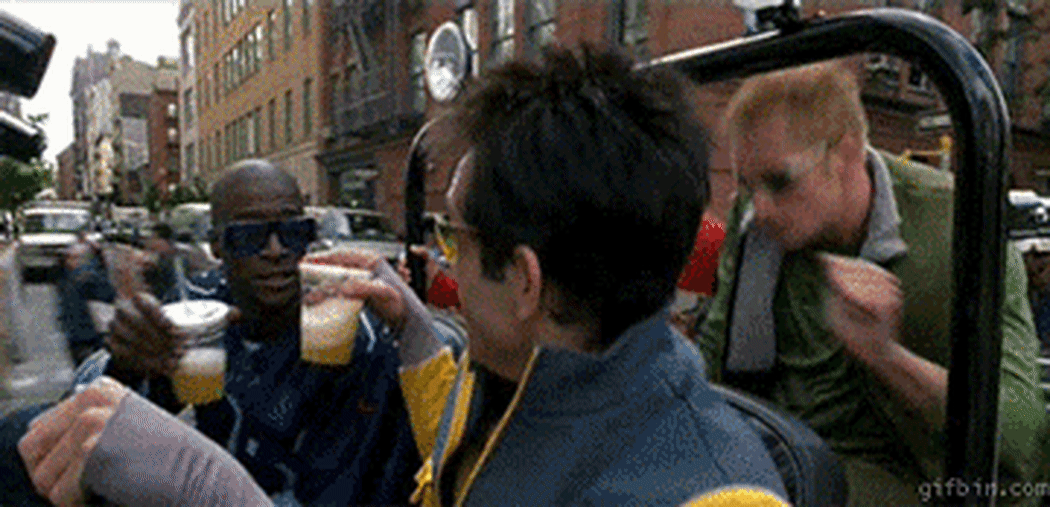‘Tis the season for road deaths. Every year, about 300 people die in car crashes, often at public holidays. That’s less than it used to be, but still too many – and changes to drink driving laws, introduced a fortnight ago, intend to bring it down even further in future.
The changes outlined in the Land Transport Amendment Bill came into effect on December 1 and reduce the alcohol limit from 400 micrograms of alcohol per litre of breath to 250mcg for drivers over 20. (There’s already zero-tolerance in place for drivers under 20, in accordance with a law change in 2011.) That brings New Zealand in line with limits that exist in other parts of the world, including Australia. Plus the blood alcohol limit has been reduced from 80mg of alcohol per 100ml of blood to 50mg.
LISTEN: Assistant Commissioner of Road Policing Dave Cliff discusses the new drink driving laws on Nine to Noon.
According to this Scoop.co.nz editorial, under the new laws, most adults may be able to drink two standard drinks over two hours and be likely to remain under the new drink-driving limits for alcohol. A standard drink is equivalent to 330ml of beer, 100ml of wine or 32ml of spirits.
But the result of cracking down on the limits was that many have rushed to see exactly how much they can now drink and still cheat the breathalyser. The New Zealand Herald found that women could drink significantly less than men and remain under the limit. There was as much as five glasses of wine difference between the legal limit between the genders. “After his seventh and last drink and at 280mcg still currently legal, Smith ruled out driving. ‘I wouldn’t trust myself behind the wheel.’ And off he went, taking rather big steps.”
TV3 took to the streets of Ponsonby to test the new rules, finding most people surprised to find themselves under the limit, but acknowledging the all-important issue of how big ‘the pour’ is. “Have another one,” reporter Tristram Clayton gently chides. “Just catch a cab.”

Photo: Unknown
At least one business is hoping to capitalise on the change. Beer makers Tuatara produced a handy infographic (advertising their wares, of course). And one cider maker is hoping that the lower limits will lead to an increase in cider sales. “I think one of the trends that’s a bit of a tail wind is the lower driving limit for alcohol” says Paul Paynter, “and cider at six per cent is less than half of most wines.”
With the news that water won’t help you cheat the breathalyser, it’s probably safer to err on the side of fewer drinks – at least if you’re planning to get behind the wheel. The new laws also give police more powers to punish crimes relating to drink driving with fines and demerit points. Driving with a breath alcohol reading within that lower range of 251 to 400 mcg will now set you back $200 and 50 demerit points; above 400 mcg, and you could face a prison sentence, depending on the harm caused. (Especially if you’re in a rural area, research shows.)
Refusing to take a breath test will incur a fine of $700 as well as 50 demerit points. And if you accumulate 100 or more demerit points within two years, your licence will be suspended for three months.
The changes were informed by a two-year cost-benefit analysis [pdf] by the Ministry of Transport, which found that lowering the blood alcohol limit would prevent 3.4 deaths and 64 injury-causing crashes.
READ: What price do you put on a life?
As of yesterday, 272 people had died on the roads since January 1, already more than the 2013 total of 236. But by comparison, 384 died in 2009, and aside from a blip in 2012, that number has been declining.
That’s mostly due to the societal stigma now attached to driving drunk: it’s simply not as acceptable as it was 20 or even ten years ago. That’s been helped along by the New Zealand Transport Agency’s public service campaigns, which are sometimes harrowing, sometimes humorous, but always memorable.
READ: A hard sell to stop people driving drunk
Many of those ads now focus on the role of onlookers in preventing people from driving drunk. Everyone’s got a stake in the issue when, for every 100 “alcohol- or drug-impaired drivers or riders killed in road crashes”, 50 passengers and 19 sober road users die with them.
Plus, road crashes and fatalities are a huge burden on the economy. The total “social cost” of motor vehicle injury crashes in 2012 was approximately $3.29 billion, covering loss of life and life quality, loss of output due to temporary incapacitation, medical and legal costs, and damage to property. That’s not including the costs of the 195,400 crashes that didn’t result in injury, valued at a further $0.55 billion.
The holiday road toll period begins Wednesday 24 December and runs to Monday 5 January. Seven people died in the same time last year. It’s already too late for total figures for 2014 to better those in 2013, but it’s never too late to change the culture.
Cover image: PHOTO NZ
This content was produced with funding support from NZ On Air.

